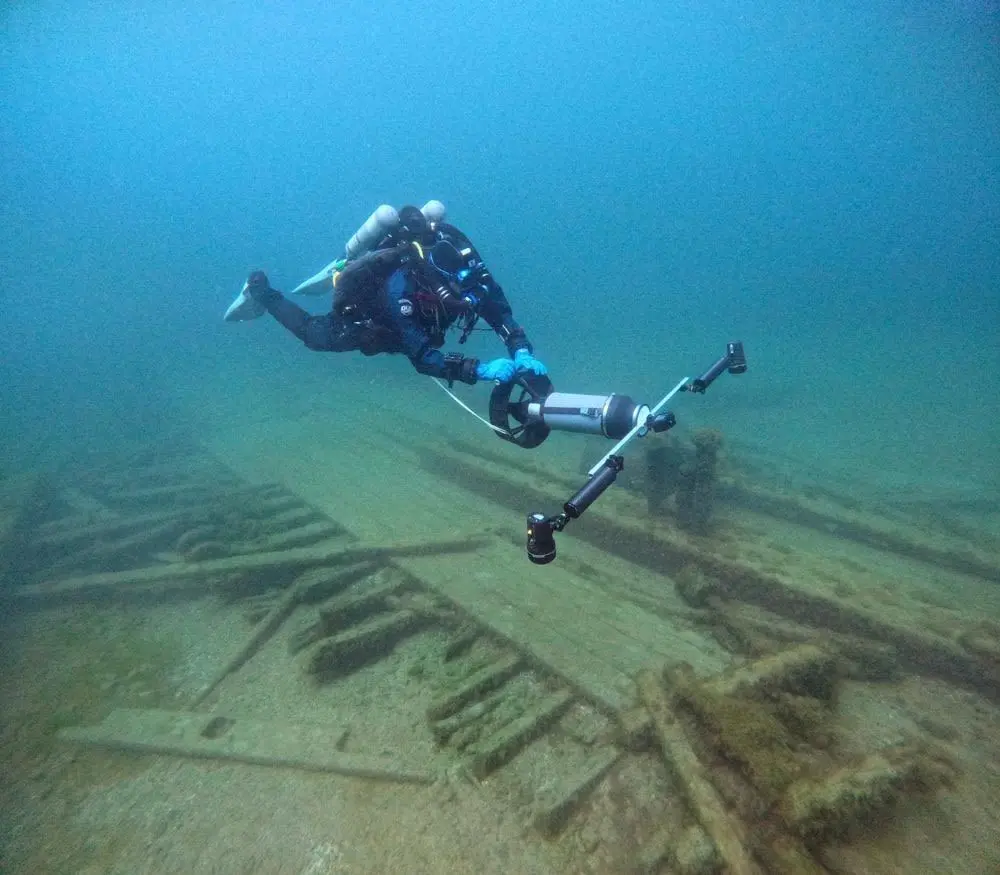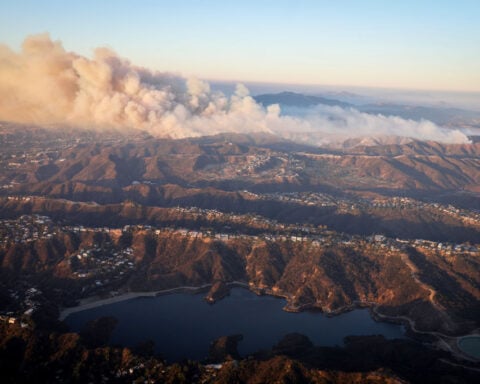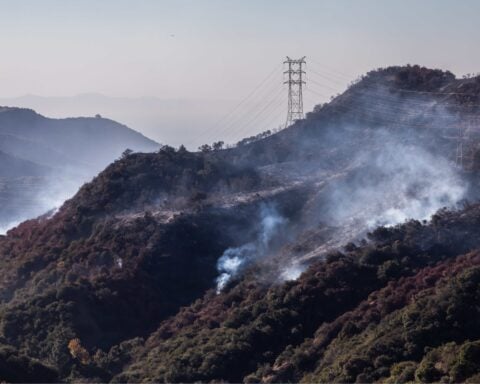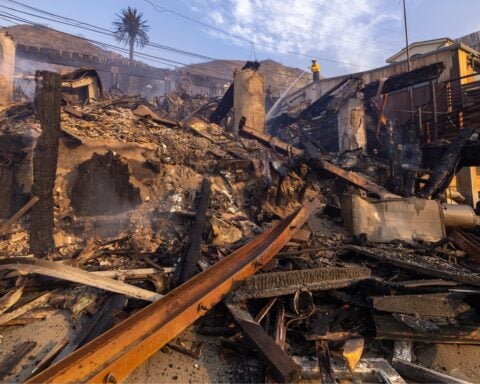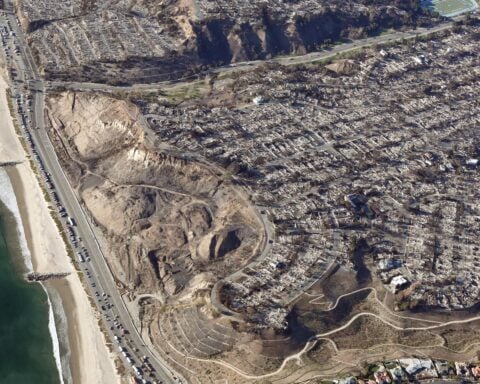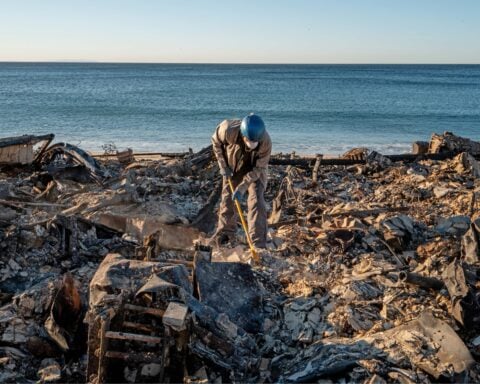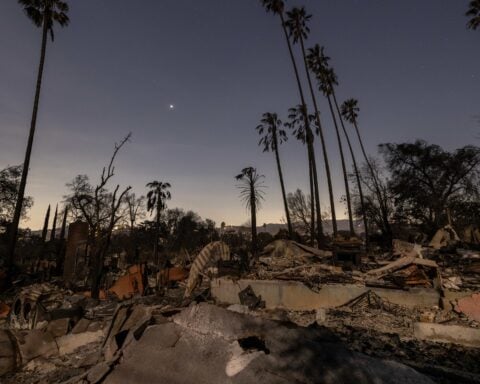(CNN) — The November 1975 shipwreck of the Edmund Fitzgerald is probably the most famous one of the Great Lakes, thanks to Gordon Lightfoot’s hit ballad. But a new discovery is putting another ship – the Margaret A. Muir – on the map.
An intrepid team of maritime historians working with the Wisconsin Underwater Archeology Association recently located the schooner that was lost to a fierce gale on the morning of Saturday, September 30, 1893.
The Muir – a 130-foot, three-masted ship built in 1872 – was found under about 50 feet (15 meters) of Lake Michigan water off Algoma, Wisconsin, according to a WUAA news release.
It sank only a few miles off the entrance to Algoma Harbor, according to the release. It went undetected for more than a century despite hundreds of boats passing over it each fishing season.
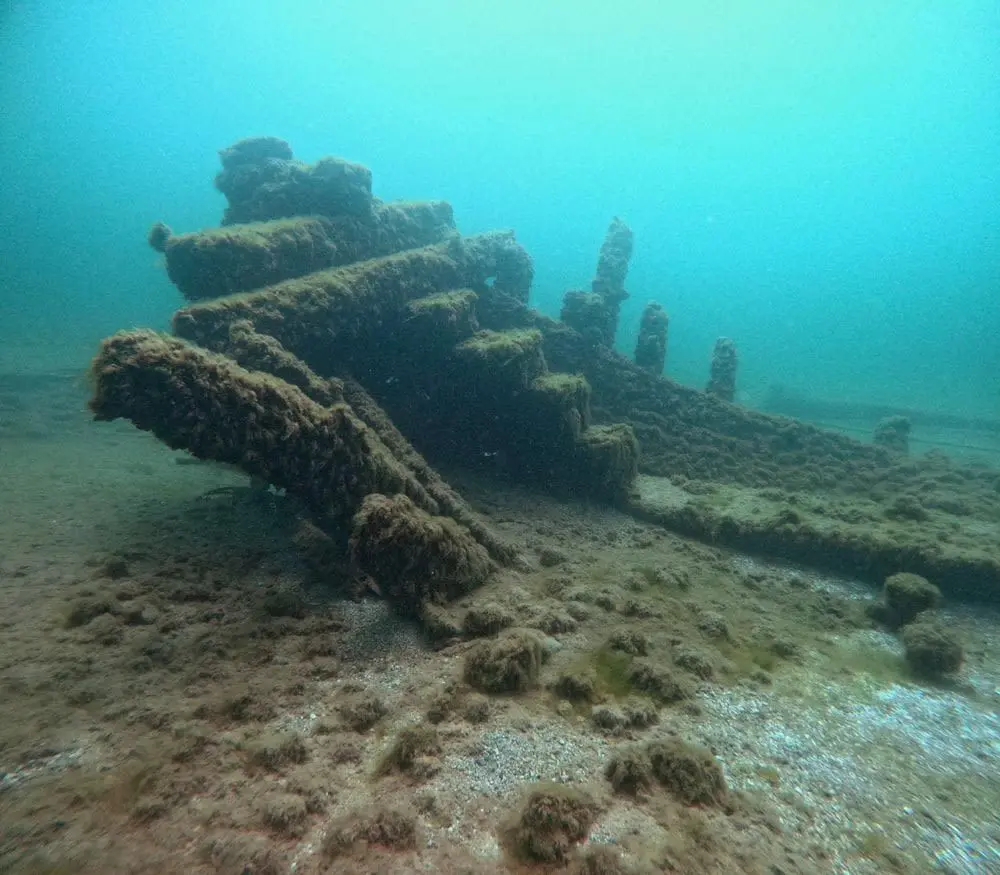
Maritime historian Brendon Baillod, who found the ship on May 12, 2024, along with teammates Robert Jaeck and Kevin Cullen, said it’s a significant archaeological discovery.
“One of the things that’s important about this wreck is that it’s opened up – we call it ‘filet of schooner’ – where the deck came off and then the sides opened up. And we can see the architectural construction details of how a 19th-century Great Lakes wooden vessel, a schooner, was built,” he told CNN Travel.
“This is almost like somebody architecturally dismantled it to show you exactly how it was built,” he said. In addition, all its deck gear remains, including two giant anchors and hand pumps.
This is not too unusual in the Great Lakes, whose cold, fresh waters often provide an environment for preservation, according to the University of Buffalo.
Altogether, these commercially vital waters are estimated to hold the remains more than 6,000 ships going back to the 17th century, creating a mysterious and fascinating lore of which the Muir is a part.
Fighting for their lives
Like other working ships of the late 1800s, the Margaret A. Muir was part of the booming maritime trade economy of the Great Lakes, which had access to the Atlantic Ocean via the St. Lawrence Seaway.
“This was … the engine that fueled the Industrial Revolution in America. All the raw goods – the copper, the iron ore, the lumber that built our cities came out of the Great Lakes via this huge freshwater freeway,” Baillod said.
The Muir “was intended primarily for the Great Lakes grain trade, although it carried many diverse cargoes, frequenting all five Great Lakes over her 21-year career,” according to the release.
On that calamitous day when the Muir’s labors ended, Capt. David Clow reported the schooner, carrying a load of salt, had cleared the Straits of Mackinac and was making its way to the Wisconsin coast. According to the release, a 50-mile-per-hour gale struck at about 5 a.m.
The ship was holding up to the sudden storm well until about 7:30 a.m. when the waves increased dramatically, with some breaking over its decks. The vessel was nearing Algoma (back then called Ahnapee) when Clow discovered several feet of water in the hold.
Reports said he “immediately ordered the crew to abandon ship. No sooner than the order was given, the ship lurched violently and plunged for the bottom, taking Captain Clow’s faithful dog and ship’s mascot with it,” according to the WUAA release.
Fortunately for the crew of six, they were able to make their way through 15-foot seas to the safety of shore. Townspeople spirited the freezing and soaked crew to a hotel and gave them dry clothes.
The loss of his faithful pooch was tough for Clow, though. He was reported as saying that “I would rather lose any sum of money than to have the brute perish as he did.”
Making the news of the day
The loss of the Muir was covered by major Great Lakes newspapers such as the Chicago Tribune, Detroit Free Press and the Plain Dealer of Cleveland.
In a roundup of “Marine Notes” on October 4, 1893, the Tribune reported the survivors had arrived in Chicago, and “had lost everything except what they had on.”
It also quoted Clow as saying, “I have quit sailing for the water seems to have no liking for me.” It’s understandable that he felt the lakes had turned on him. In the previous sailing season, the Tribune wrote that Clow had run the schooner A.P. Nichols on rocks at an entrance to famed Green Bay.
Demonstrating how treacherous this line of work could be, the Free Press reported the gale that took down the Muir claimed other ships as well, resulting “in a long list of wrecks being added to the remarkably heavy marine losses of the present season.”
The Muir re-emerges
The Margaret A. Muir eventually became just another name, another footnote in the vast sea of Great Lakes shipwreck history. It might have remained that way if not for the efforts of Baillod and his team.
Baillod grew up on Michigan’s Upper Peninsula, and his fascination with a couple of wooden hulks in Lake Superior near his house sparked a lifelong interest in the maritime history of the Great Lakes.
About 30 years ago, Baillod began compiling a database of Wisconsin’s missing vessels, he said. The Muir stood out to him as one that had a good possibility of being found. He graded the ships on factors such as accurate accounts from survivors of where a ship went down.
“The Margaret Muir was in the top 10 because I had a very good account from her captain, and I also had really good accounts from the local newspapers because her masts were breaking the surface after she sank and she was a hazard to navigation,” Baillod said. “She was sort of in the way of the harbor mouth a few miles out. So I had a strong inkling that I could find her.”
In 2023, Baillod approached the WUAA about undertaking a search for the Muir. A year later, it all came together.
Baillod and his team struck gold at the very end of the very first day of looking.
It was “around 4 o’clock. And as we’re pulling up the sonar, the darn wreck crawls across the screen, we caught her in the last 30 seconds that we could have.
“We were very excited to find her because we had done all this research, like I had done genealogies of the captain and of the builders and the owner and I had traced her entire career,” he said. “So it was really exciting to actually find the physical remains of the vessel itself on the bottom.”
Within weeks, thousands of high-resolution images of the site were made, the release said.
The WUAA is now working to nominate the site for the National Register of Historic Places. If it’s accepted to the register, it would join the schooner Trinidad, which the team located in deep water off Algoma in June 2023.
“The reason we look for these wrecks is we want to share them with the communities of Wisconsin because these are some of the last tangible hooks that these communities have to their maritime history,” Baillod said.
The-CNN-Wire
™ & © 2024 Cable News Network, Inc., a Warner Bros. Discovery Company. All rights reserved.

 Biden promised to turn the page on Trump. Now he's being replaced by him
Biden promised to turn the page on Trump. Now he's being replaced by him
 Firefighters prepare for increasing gusts following brief reprieve for LA area
Firefighters prepare for increasing gusts following brief reprieve for LA area
 John Ratcliffe, tapped by Trump to lead the CIA, will face questioning in the Senate
John Ratcliffe, tapped by Trump to lead the CIA, will face questioning in the Senate
 Nippon Steel wants to work with Trump administration on US Steel deal, Mori tells WSJ
Nippon Steel wants to work with Trump administration on US Steel deal, Mori tells WSJ
 After cable damage, Taiwan to step up surveillance of flag of convenience ships
After cable damage, Taiwan to step up surveillance of flag of convenience ships
 BOJ will raise rates if economy, price conditions continue to improve, Ueda says
BOJ will raise rates if economy, price conditions continue to improve, Ueda says
 Manatees congregate in warm waters near power plants as US winter storms graze Florida
Manatees congregate in warm waters near power plants as US winter storms graze Florida
 AAPI adults prioritize immigration, but split on mass deportations: AP-NORC/AAPI Data poll
AAPI adults prioritize immigration, but split on mass deportations: AP-NORC/AAPI Data poll
 As Los Angeles burns, Hollywood's Oscar season turns into a pledge drive
As Los Angeles burns, Hollywood's Oscar season turns into a pledge drive
 As fires ravage Los Angeles, Tiger Woods isn't sure what will happen with Riviera tournament
As fires ravage Los Angeles, Tiger Woods isn't sure what will happen with Riviera tournament
 Antetokounmpo gets 50th career triple-double as Bucks win 130-115 to end Kings' 7-game win streak
Antetokounmpo gets 50th career triple-double as Bucks win 130-115 to end Kings' 7-game win streak
